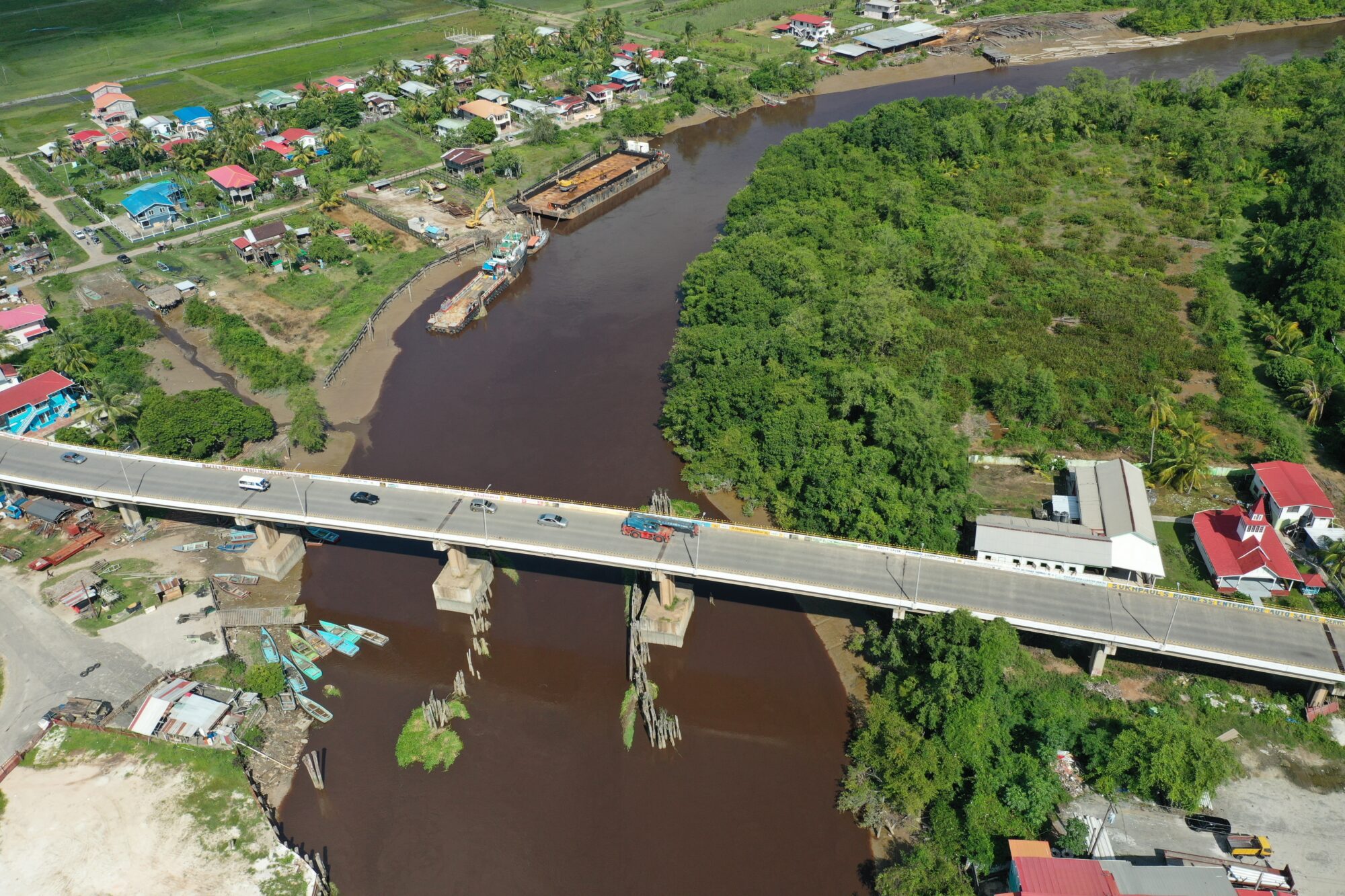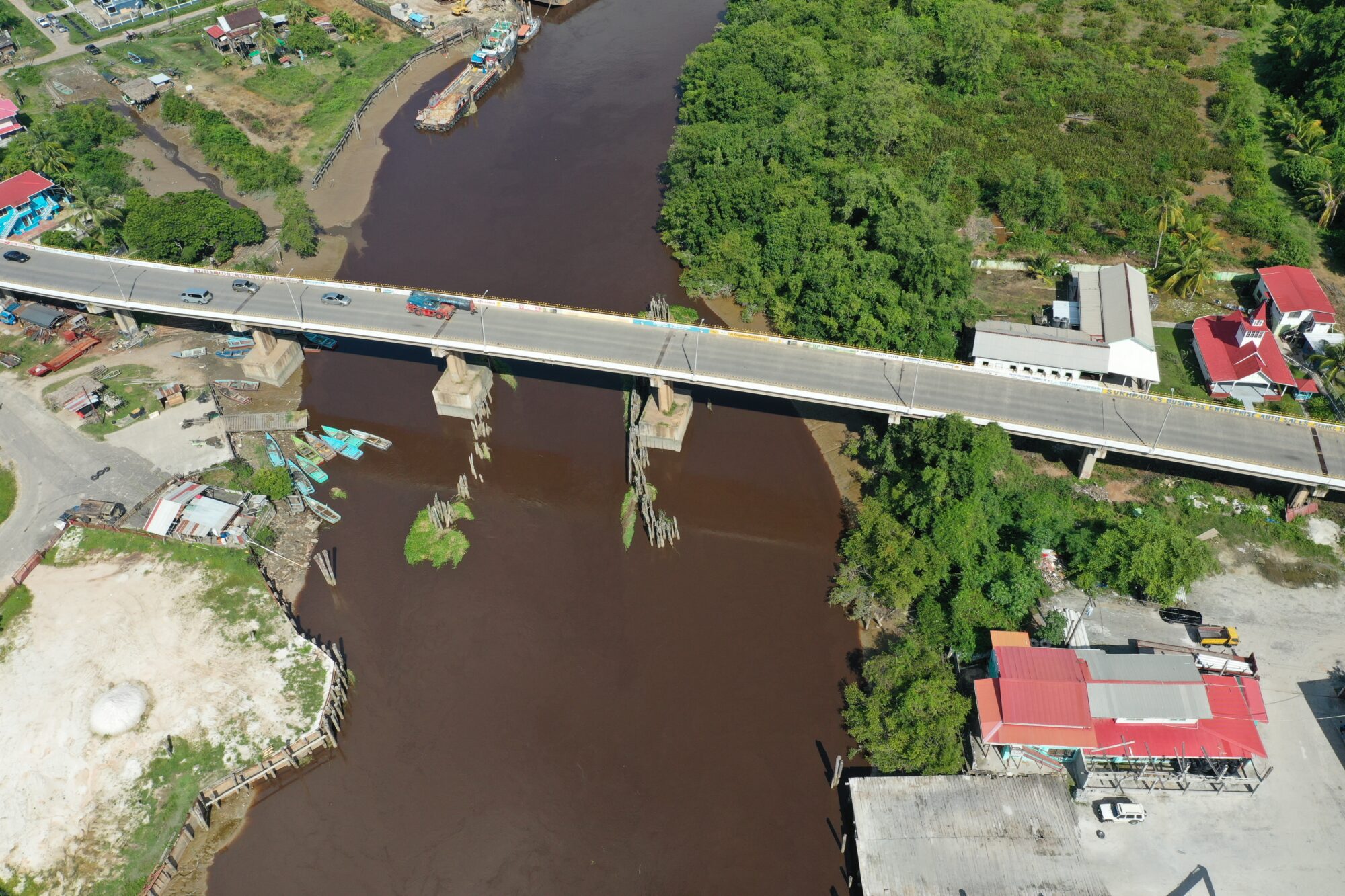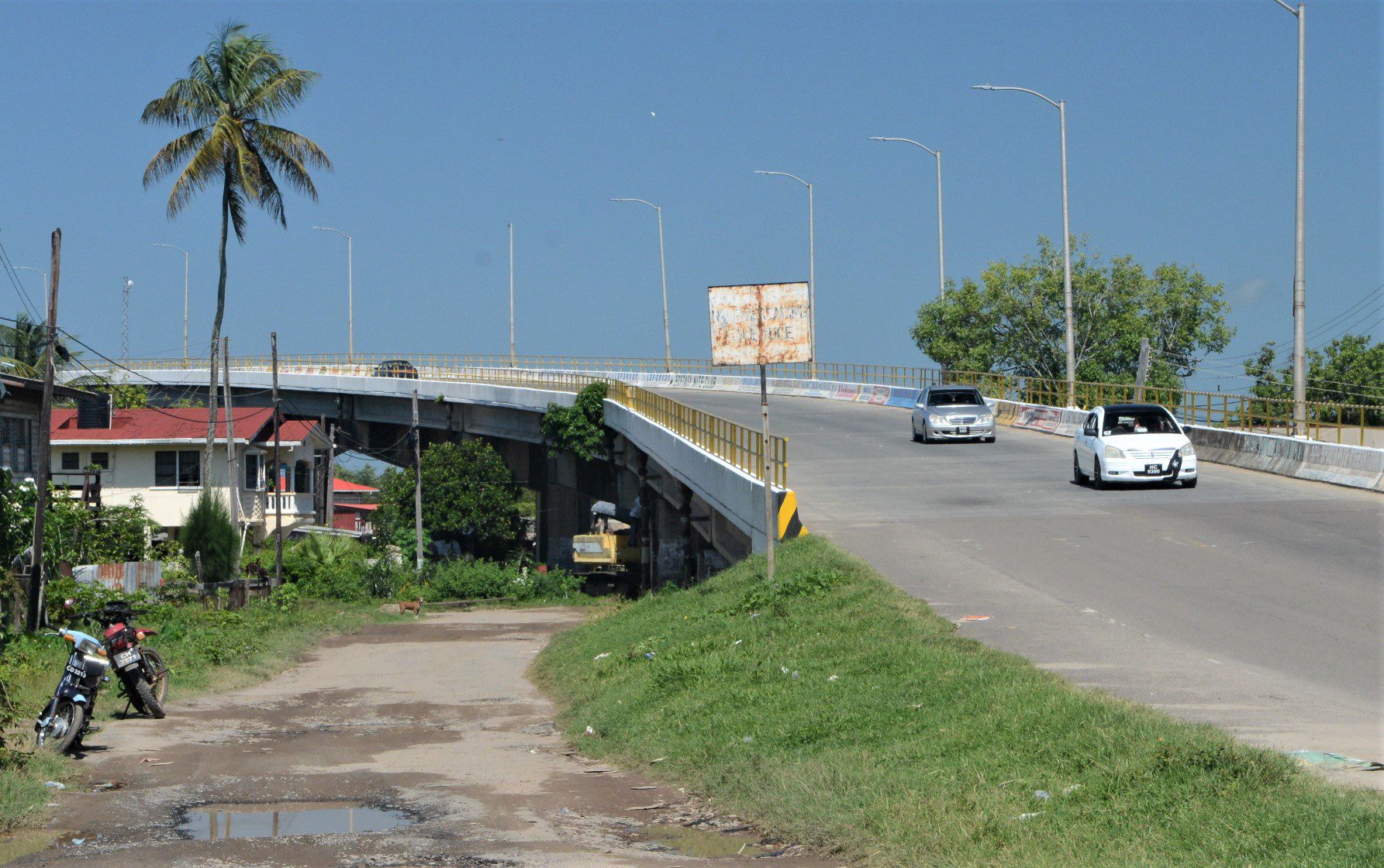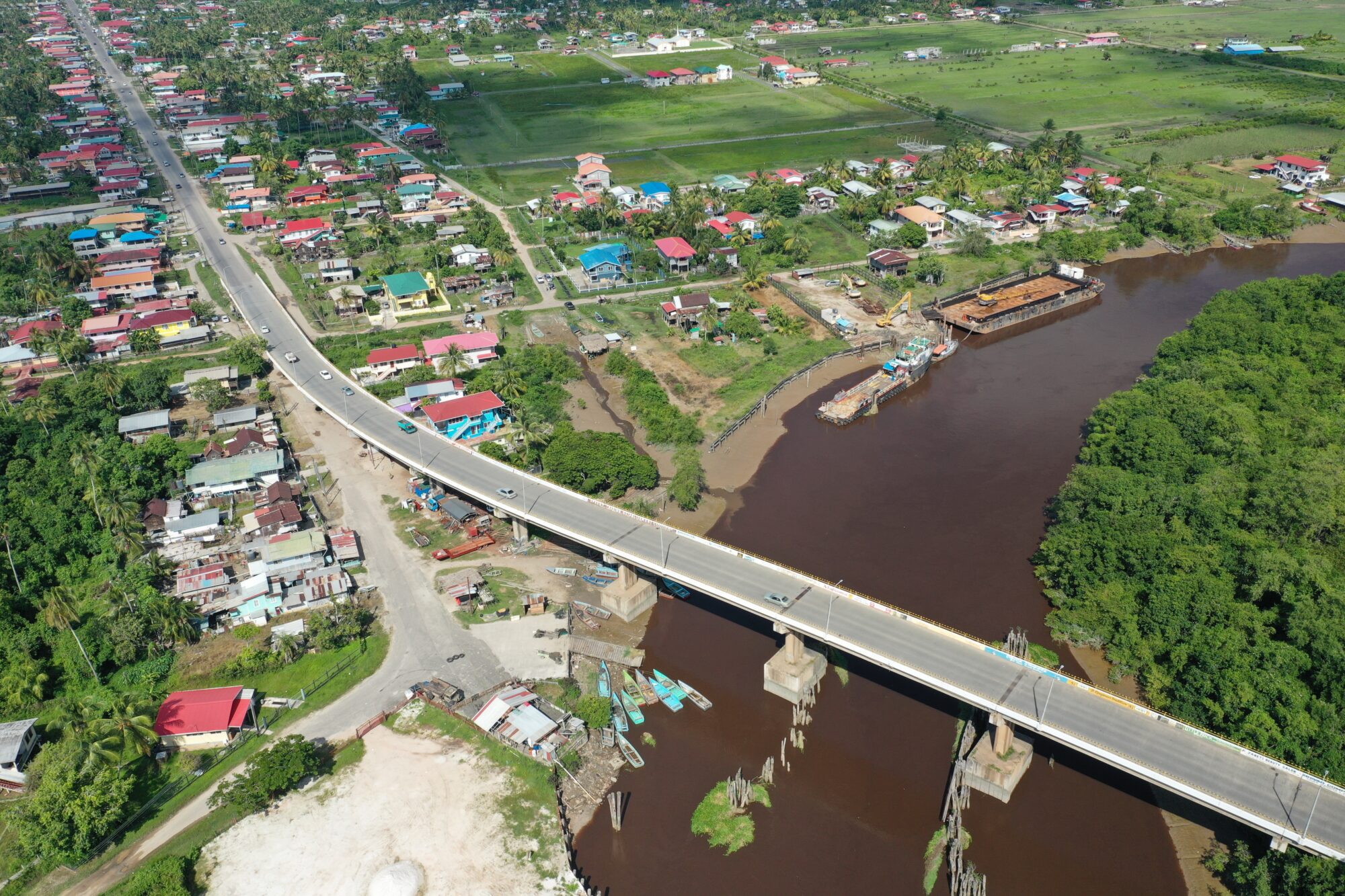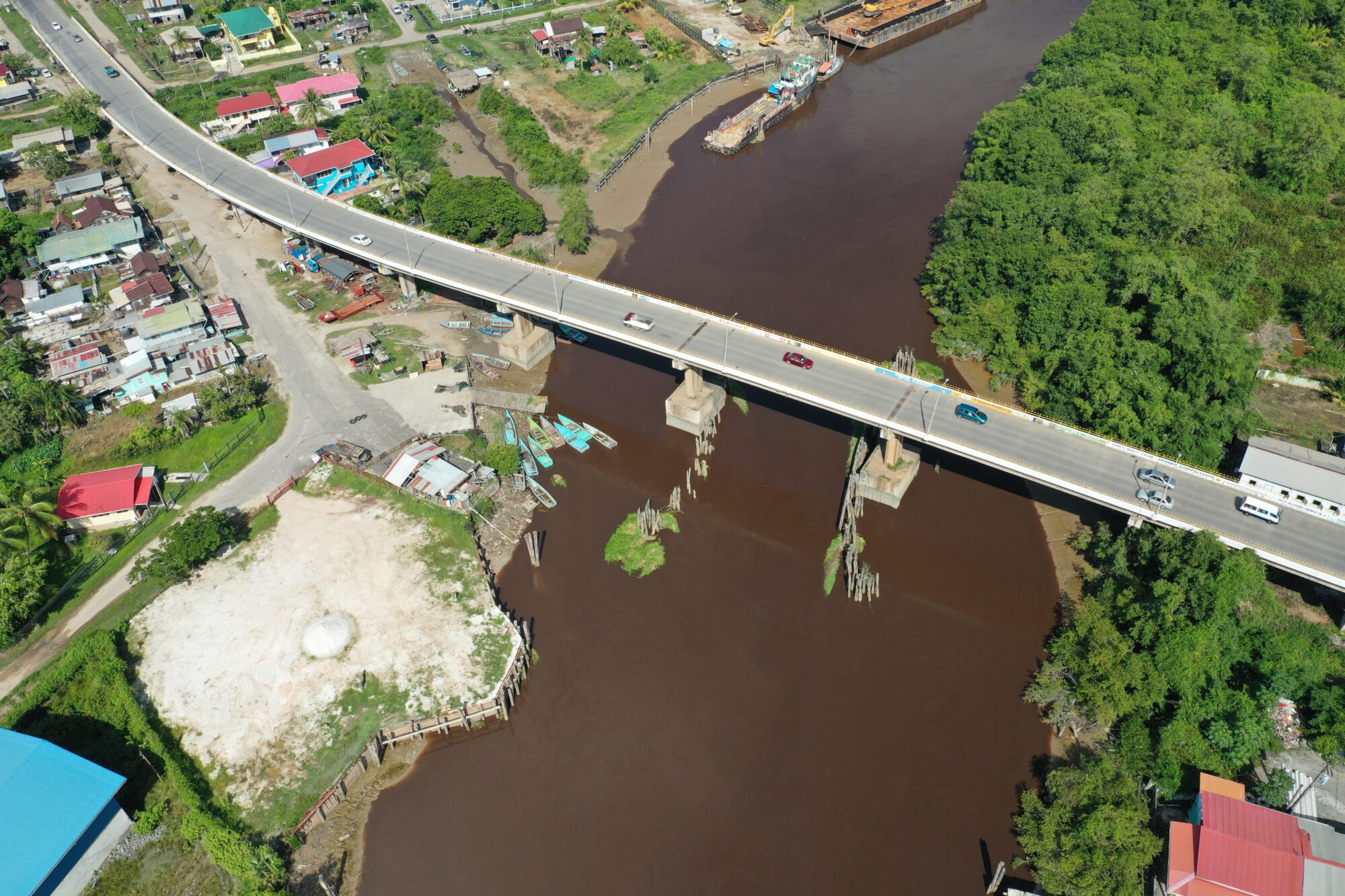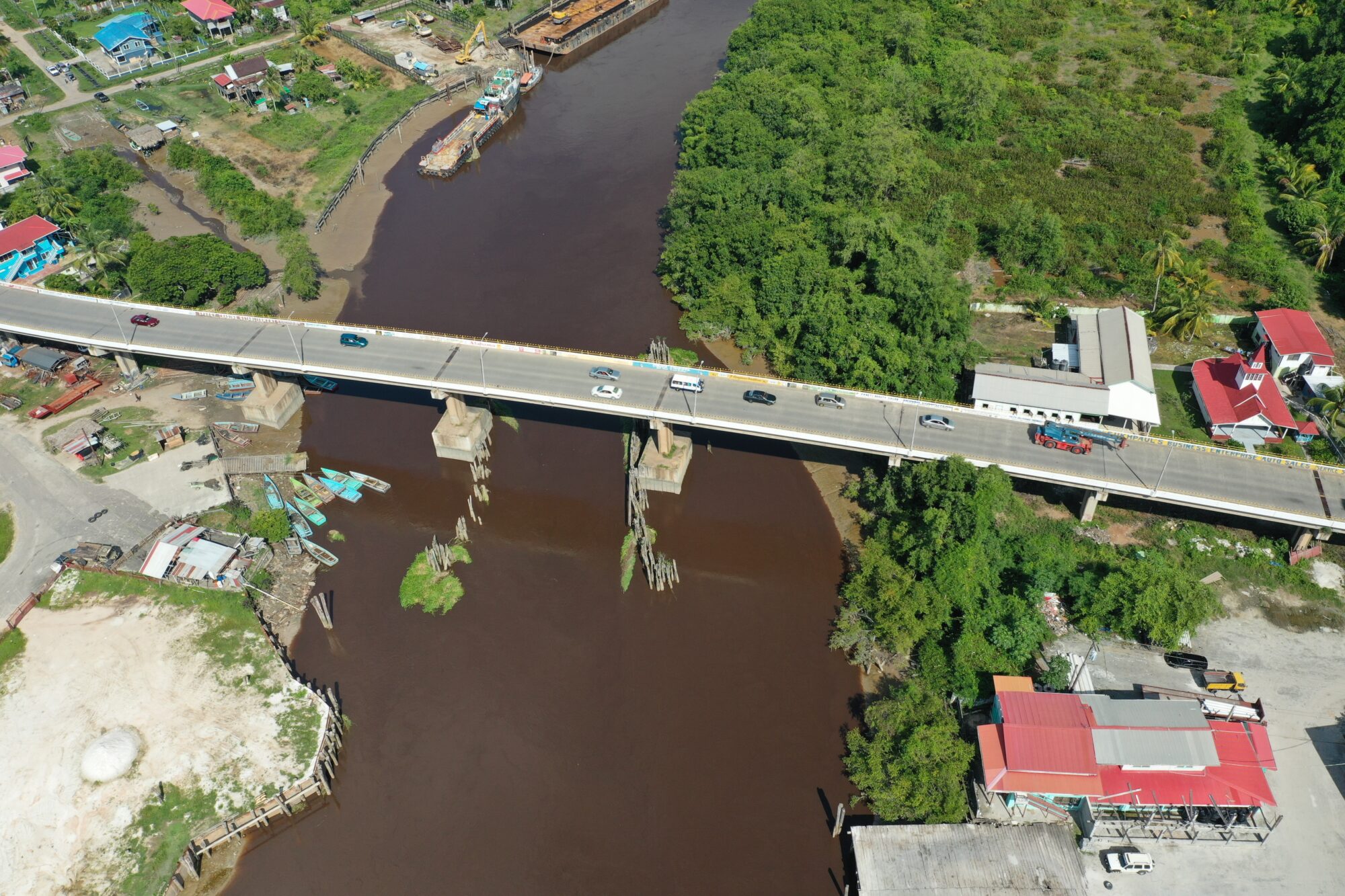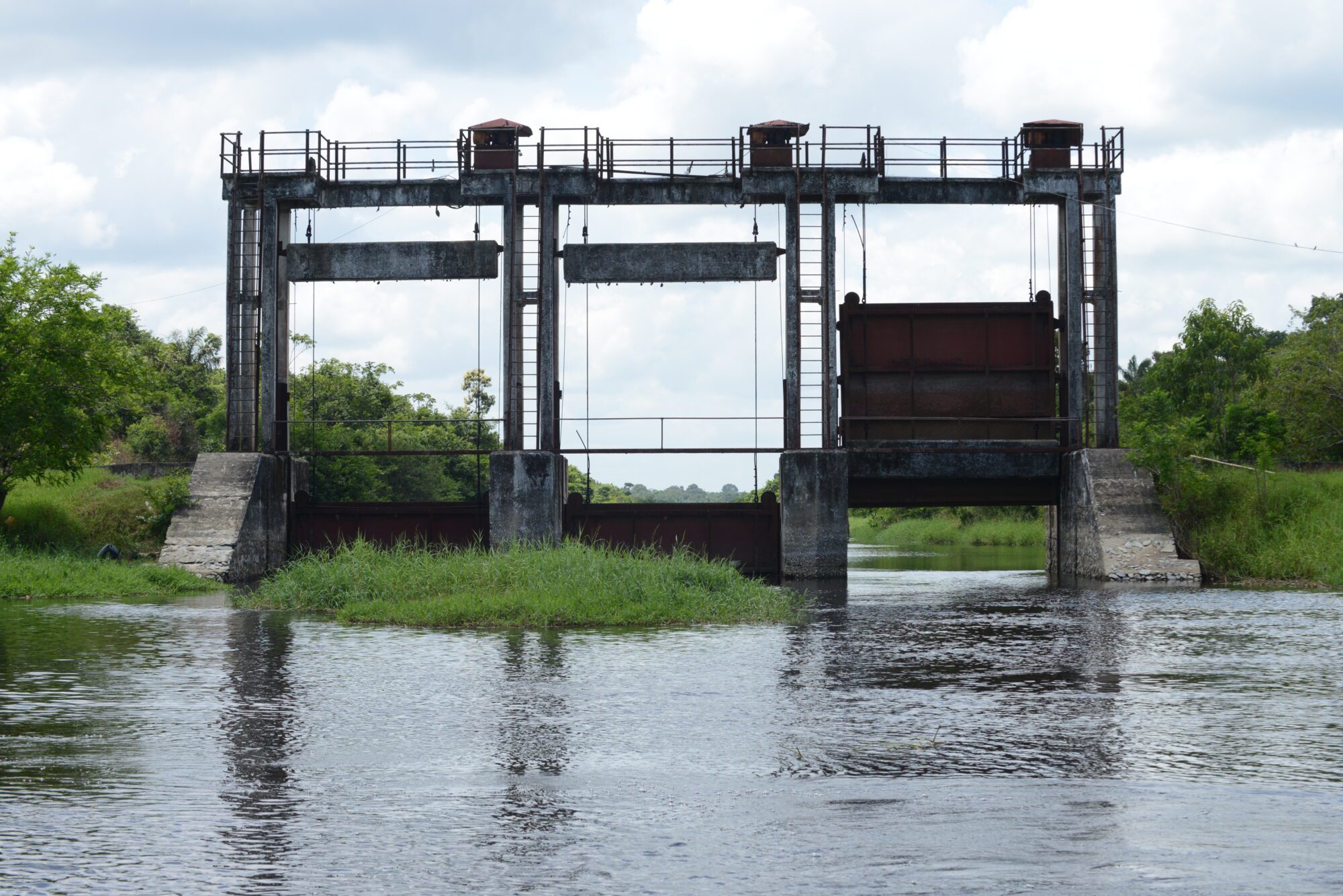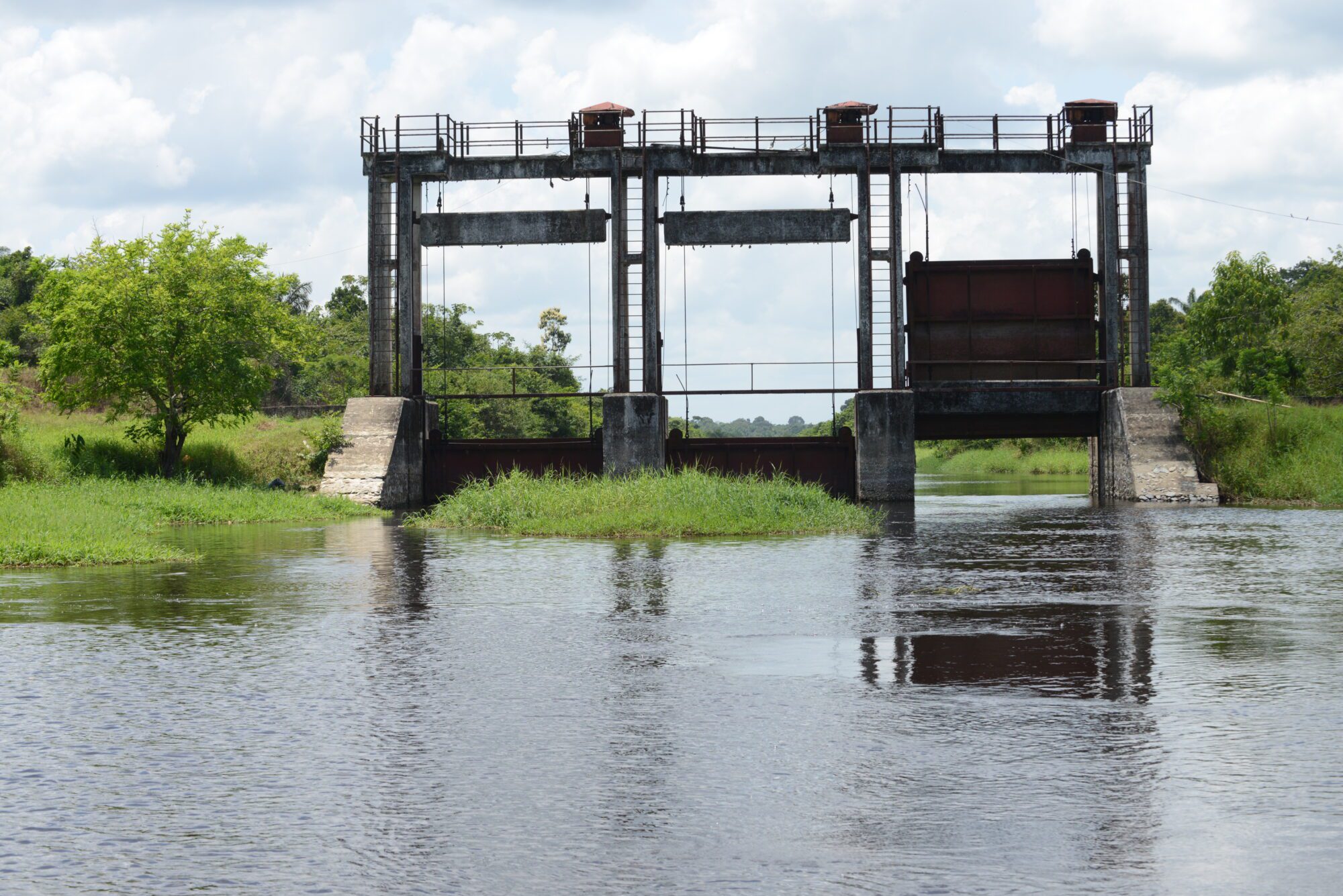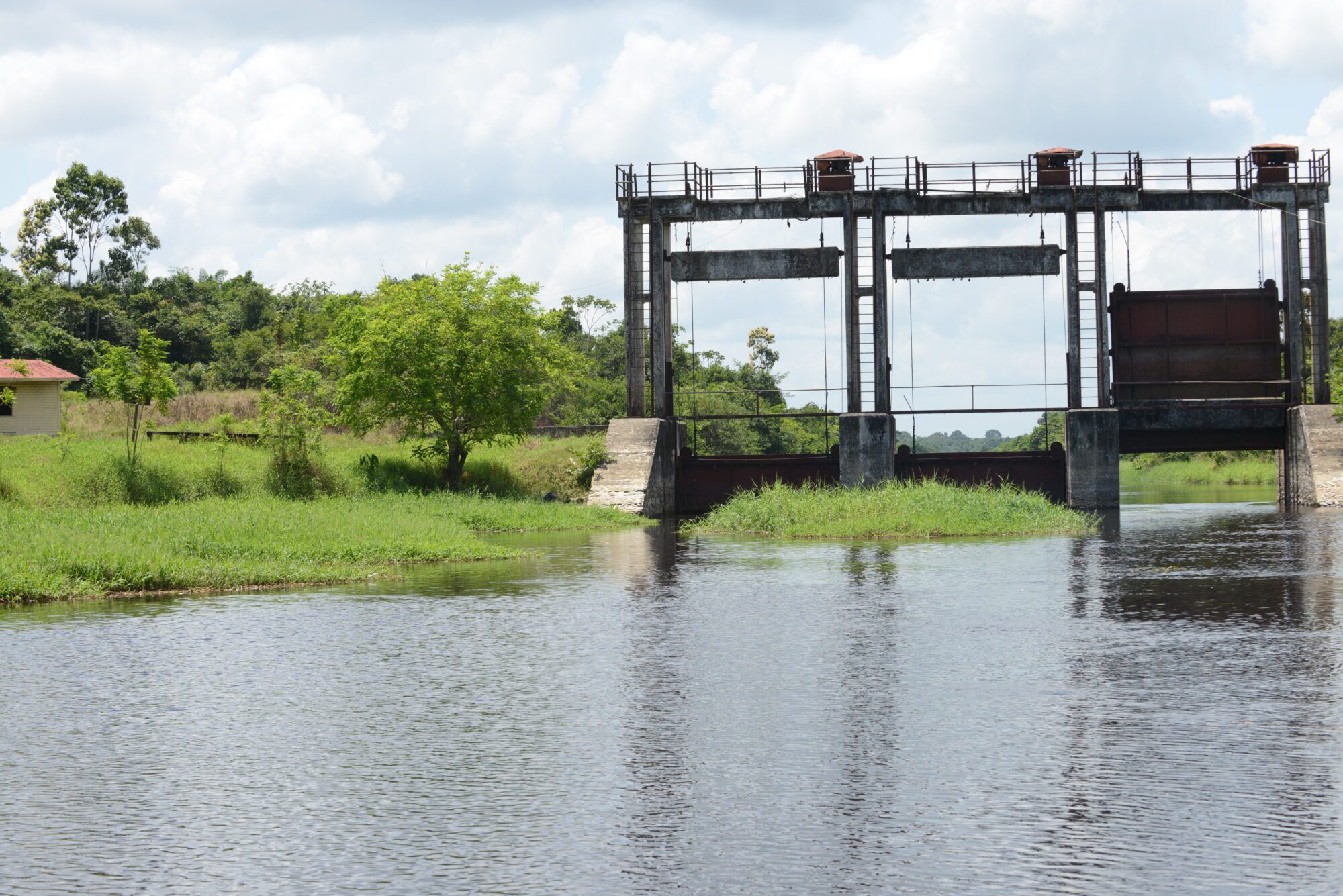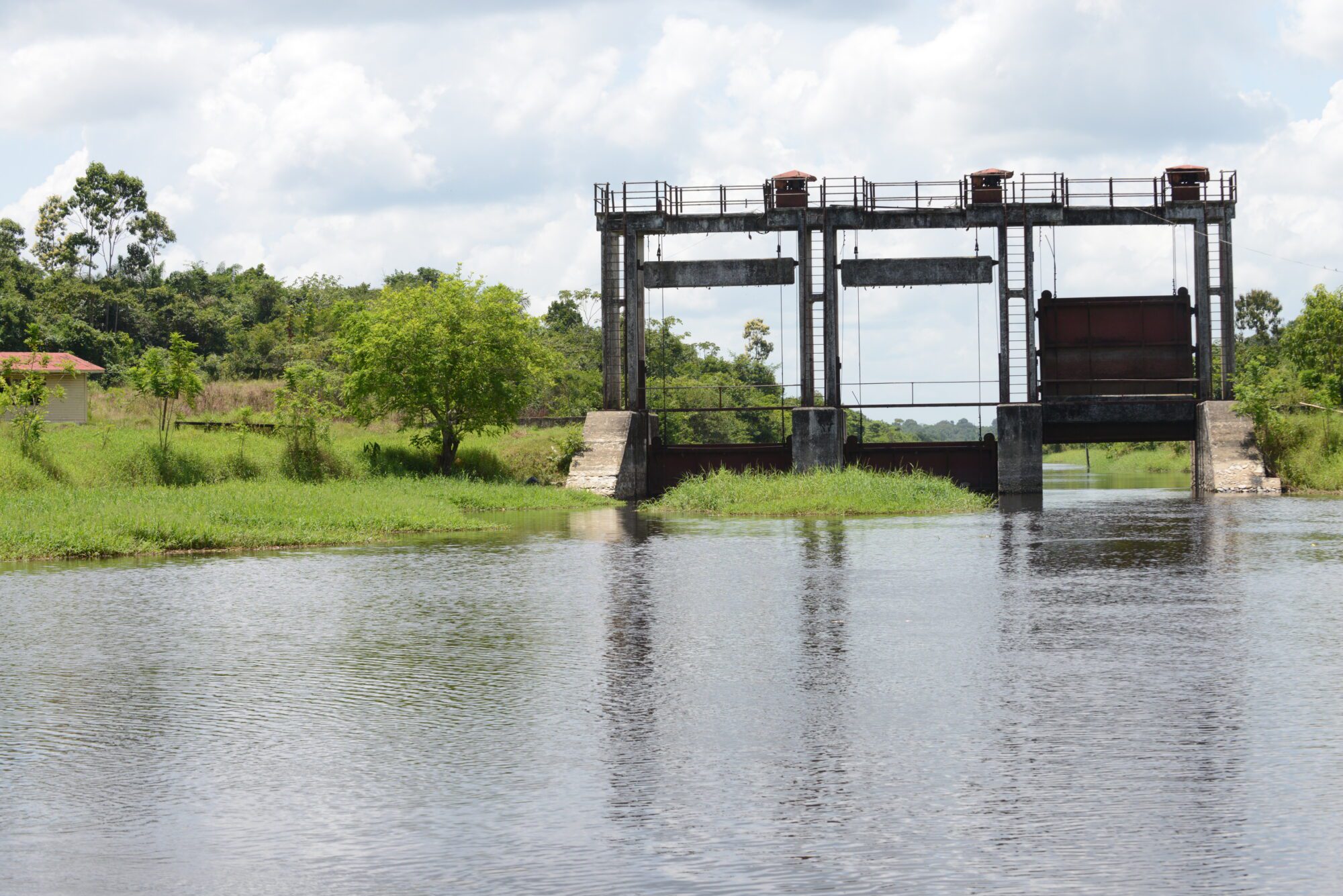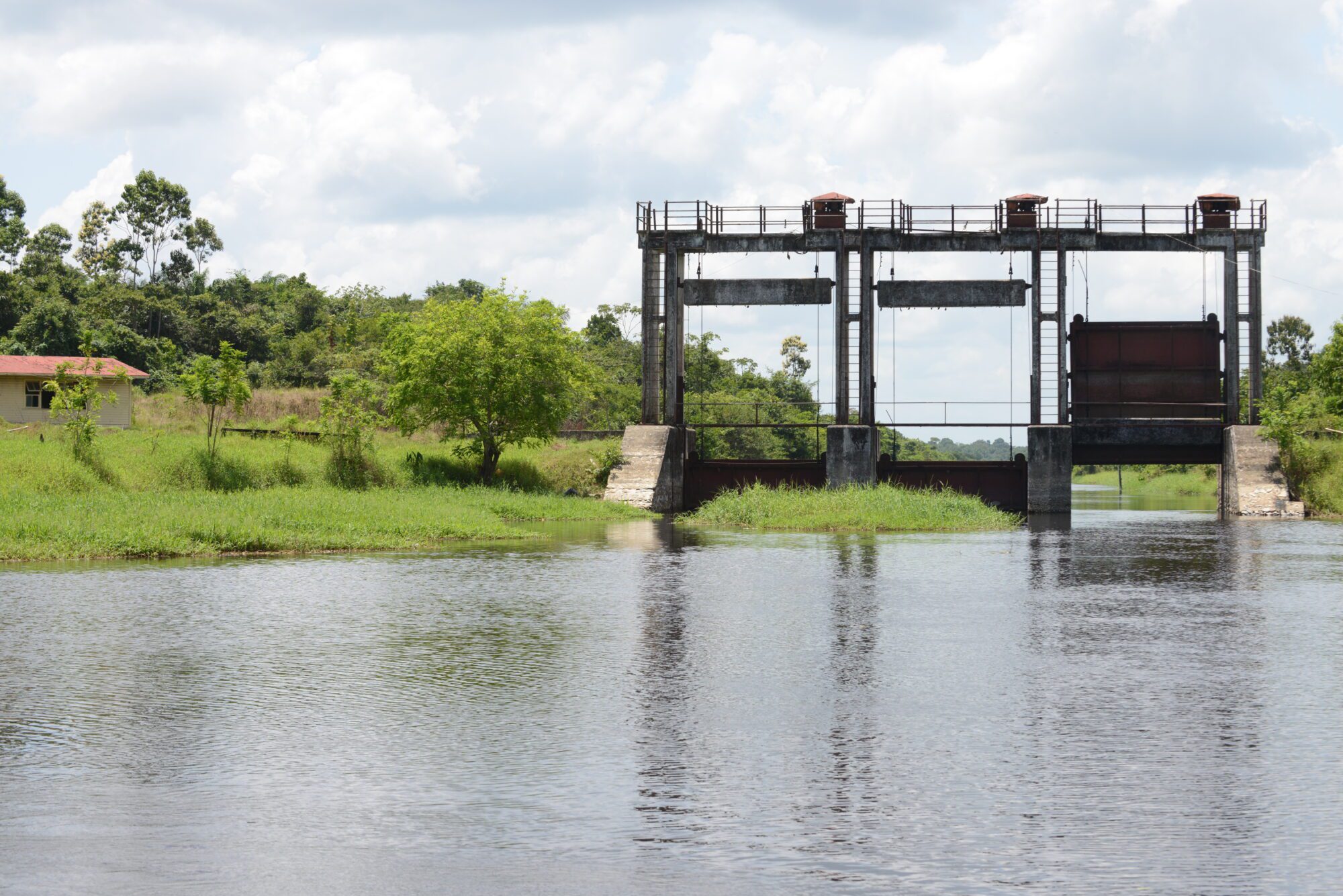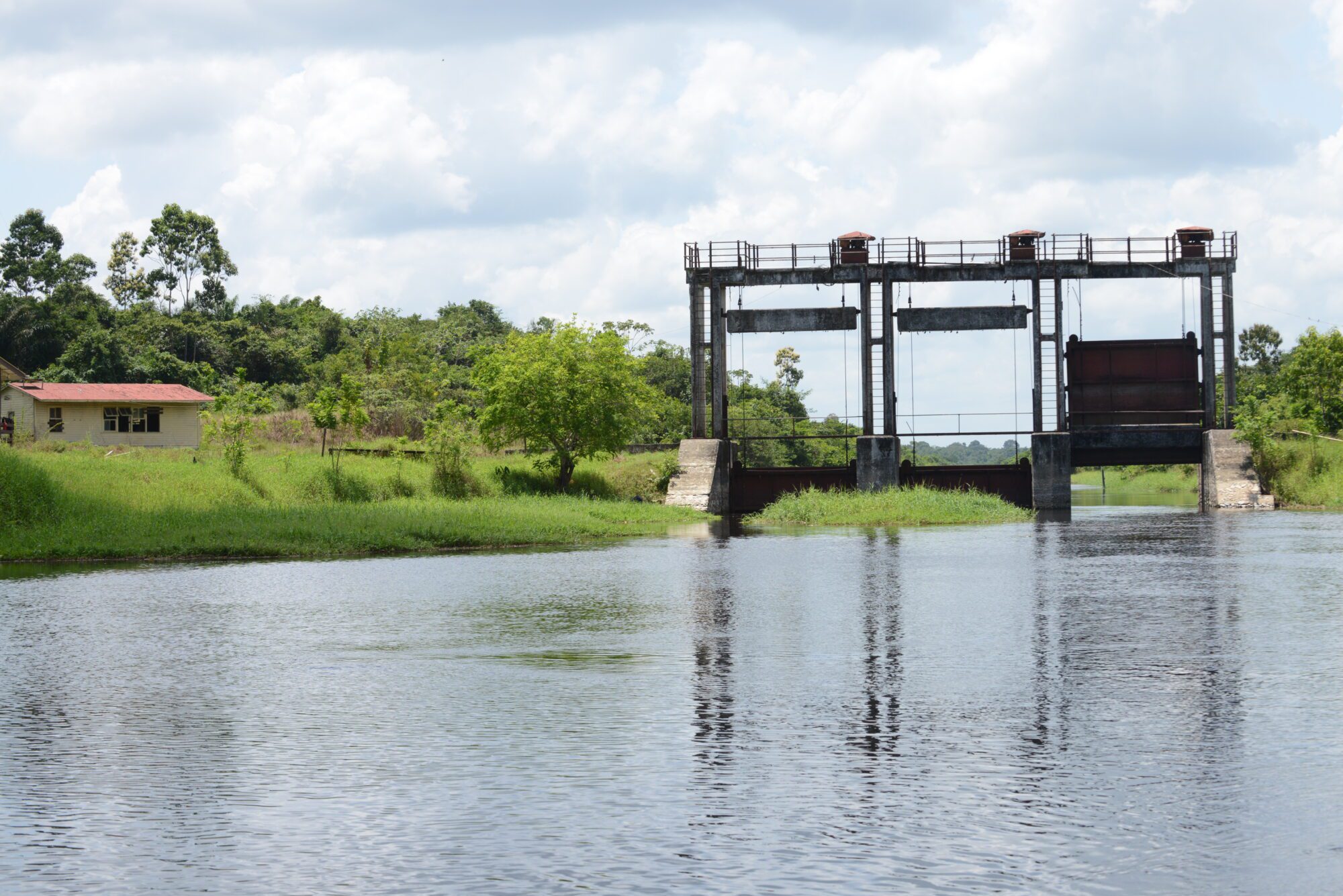Location: Canje, Berbice
Classification: Civil Infrastructure
Period/ Year Built: 1978
Historical Background / Description:
The Canje River Bridge is located at the entrance of New Amsterdam, Berbice. The bridge is the second structure to span the Canje River. The first bridge, the Canje Swing Bridge was located a short distance away from the current structure. The old swing bridge was considered one of British Guiana’s greatest engineering achievements of the 19th century. The swing bridge was designed by Messrs. Hawk and Hayter and was constructed by London contractors, Joseph Westwood and Company in 1891, for an estimated cost of $25,000. The 104.2 metres (342 feet) long bridge was constructed from concrete and iron, and was supported by cylinders embedded in the river, making it unique to the colony. The bridge was opened approximately four times a day to the public. The centre of the structure was pivoted (divided into two sections) to allow ships to pass, the bridge was then manually swung back in place once the passage was completed.
By the mid-20th century, the Canje Swing Bridge became a burden due to the growing economy which was now utilizing bigger vessels. Smaller ships operated with ease, but larger ships were restricted to scheduled openings which caused some amount of distress to the structure. Work on the current bridge commenced in October 1976.
The present two-lane bridge was opened on February 23, 1978 by Minister of Public Works, the Honourable Mr. Steve Narine and the Regional Minister for East Berbice, Mr. Oscar Clarke. It was designed by an American firm, Raymond and Harris Corporation and built by the Ministry of Public Works and Transport at a cost of $13 million GYD. The bridge’s width is 10 metres (33 feet), its length is 527.9 metres (1,732 feet), and its height is 12.1 metres (40 feet). The bridge is divided into 19 spans of steel, concrete and post-tension beams; it can accommodate vessels with a maximum height of 21.3 metres (70 feet) The bridge’s design also includes two pedestrian sidewalks. The old swing bridge was dismantled in 1978.
